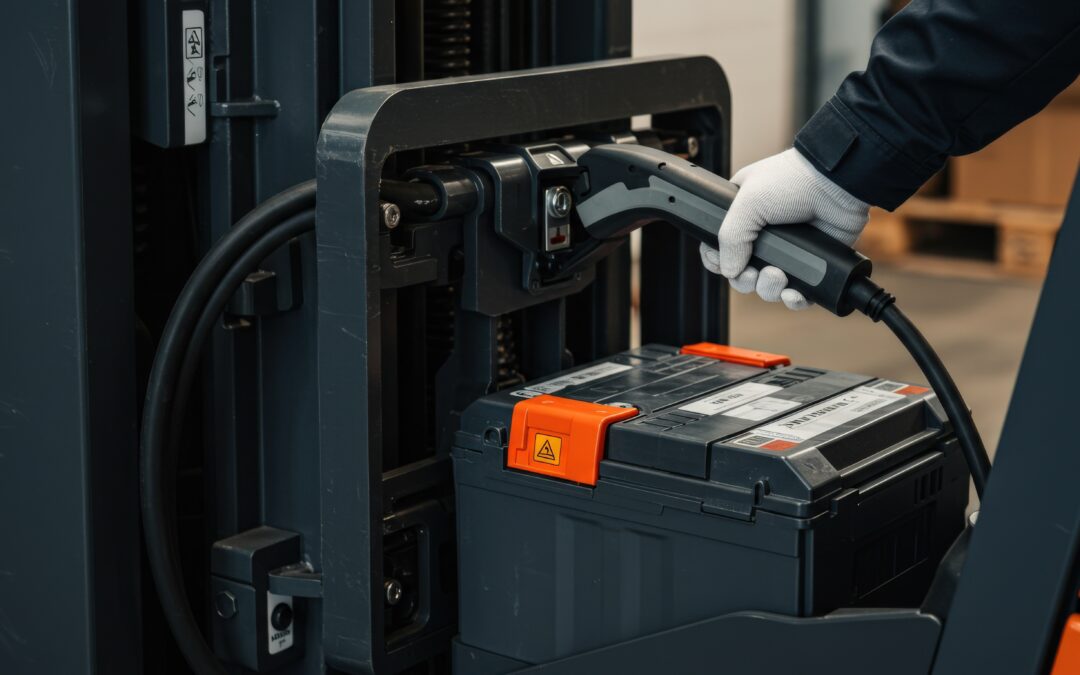
The Lithium-Ion Charging Infrastructure Gap
Why there is confusion in the market about lithium-ion charging Many fleets adopted lithium before their facilities had the power and chargers to...
Industry
Insights
Filter
Keeping Edge Data Centers Alive at 110°F: Battery Chemistries That Beat the Heat
Edge data centers are sprouting up everywhere: on rooftops, cell towers, and compact enclosures far from climate-controlled facilities. When temperatures soar to 110°F, cooling systems max out and batteries face their biggest test. Battery failure means site failure....
From the Field to the Front Office: A Conversation with Rocky Colombo, Senior VP of Industrial Sales and Data Centers
We recently sat down with Rocky Colombo, who was promoted to lead Exponential Power’s Industrial, Data Center, and Service businesses. Rocky’s had a remarkable career in the battery industry, starting out as an electrician in the field and working his way up to Senior...
BMS Confusion: Understanding the Difference Between Battery Monitoring Systems and Battery Management Systems
In the world of stored energy, three letters cause a lot of confusion: BMS. Ask ten people what BMS stands for, and you might get ten different answers. The confusion is understandable—BMS can refer to Battery Monitoring Systems or Battery Management Systems—two...
Reshaping UPS Backup Power for Utility Operations
UPS Backup Power Needs of the Utility Sector Have Evolved Significantly in Recent Years In the wake of grid modernization initiatives and an influx of renewable energy adoption. As a result, power companies require more advanced systems with more to consider than...
Customer-Centric Leadership: Ted Kozikowski Reflects on Six Months as CEO of Exponential Power
In his first six months as CEO of Exponential Power, Ted Kozikowski has championed a customer-centric approach, redefining the company’s mission to deliver unparalleled energy storage solutions. Under his leadership, Exponential Power is fostering a unified culture...
Inside the Race to Power AI’s Energy-Hungry Revolution
The Rise of AI is Straining Data Center Power Systems We’re all familiar with how artificial intelligence is reshaping the current and future technology landscape. At Exponential Power, we’re particularly attuned to the challenges AI is posing to data centers, many...
Best Practices for Maintaining Data Center Uptime
Data centers are the backbone of modern digital infrastructure. Ensuring uninterrupted service during power disruptions requires proactive planning and robust systems. Backup battery systems are central to this effort, providing a critical bridge between utility power...
Year-End Preventative Maintenance
Year-end preventative maintenance plays a key role in maintaining reliable backup power systems across industries like data centers, telecommunications, manufacturing, industrial facilities, and motive power applications. These industries rely on uninterrupted power...
Are Maintenance-Free Batteries Really Maintenance-Free? Understanding VRLA Battery Maintenance
The term "maintenance-free" has been around for a long time, primarily used by the automotive industry to highlight the convenience of batteries that don’t require water refills. In automotive applications, this makes sense. But when it comes to industrial stationary...
The Importance of Battery Systems in Modern Life: Lead-Acid, Nickel-Cadmium, and the Rise of Lithium-Ion
Batteries play an integral role in the systems that power the world around us. From keeping communication networks running to providing essential backup power in critical infrastructure, they ensure that power is available when it's needed most. Among the most common...










